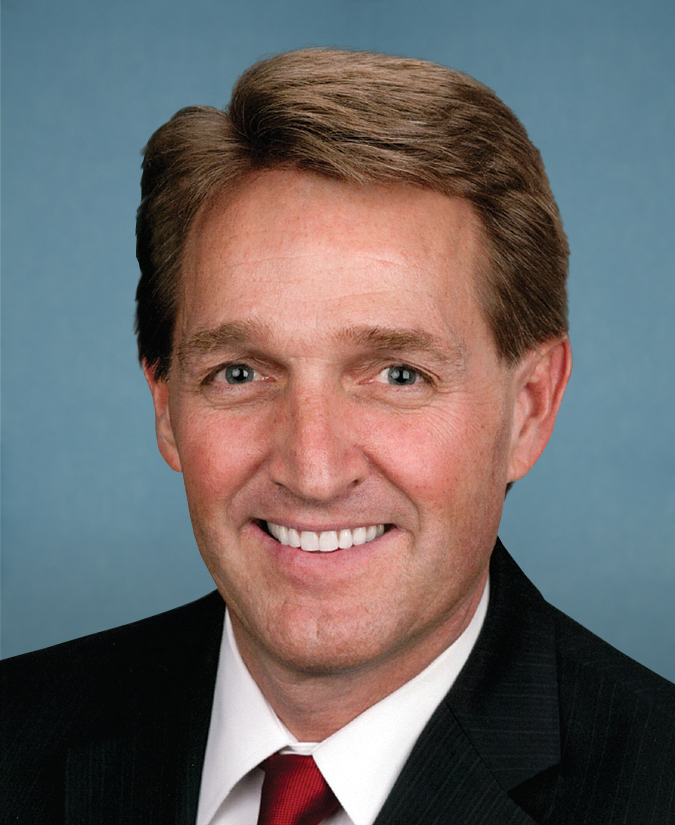
S 208 Secure the Border First Act of 2015
US Congress 114th Congress
Secure the Border First Act of 2015
S.208
About S.208
Secure the Border First Act of 2015 Directs the Department of Homeland Security (DHS) to submit Border Security Verification Commission (BSVC) and Government Accountability Office reports, at specified intervals, that assess and describe the state of situational awareness and operational control along the northern and southern U.S. borders. Defines "situational awareness" as knowledge and an understanding of current unlawful cross-border activity, the ability to forecast future shifts in such threats and trends, and the operational capability to conduct continuous and integrated surveillance of such borders. Directs DHS to:
- (1) submit and implement an operational plan to gain and maintain situational awareness and operational control of high traffic areas within two years after enactment of this Act and operational control and situational awareness along the southern land border of the United States within five years; and
- (2) notify Congress that such objectives have been obtained and maintained, which notification shall be certified by the BSVC
Specifies:
- (1) additional capabilities to be deployed to the San Diego, El Centro, Yuma, Tucson, El Paso, Big Bend, Del Rio, Laredo, and Rio Grande Valley sectors and the Eastern Pacific and Caribbean and Gulf Maritime regions to achieve situational awareness and operational control of the southern border;
- (2) fencing to be constructed or replaced in the Border Patrol's San Diego, El Centro, Yuma, Tucson, Rio Grande Valley, El Centro, Yuma, El Paso, and Big Bend sectors;
- (3) road construction or maintenance projects to be completed in the San Diego, El Centro, Yuma, Tucson, Big Bend, El Paso, Del Rio, Laredo, and Rio Grande Valley sectors;
- (4) boat ramps to be constructed in the Del Rio, Laredo, and Rio Grande Valley sectors;
- (5) access gates to be constructed in the Rio Grande Valley sector; and
- (6) forward operating bases to be constructed in the El Paso, Tucson, Big Bend, Del Rio, Laredo, and Rio Grande sectors
Directs the Border Patrol to coordinate with the heads of each relevant federal and state agency to eradicate the Carrizo cane plant along the Rio Grande River. Requires the Border Patrol to develop metrics to measure the effectiveness of security at ports of entry,
- (2) U.S. Customs and Border Protection (CBP) to develop metrics to measure the effectiveness of security at ports of entry,
- (3) the Coast Guard and the CBP to jointly implement metrics to measure the effectiveness of security in the maritime environment, and
- (4) the CBP to implement metrics to measure the effectiveness of security in the aviation environment
Requires the BSVC to assess and the Comptroller General to report on the statistical validity of the data and methodology used to develop such metrics. Establishes the BSVC and a special congressional commission on border security to determine the criteria for recommending the three presidential appointees to the BSVC. Terminates the BSVC after determining the accuracy of the tenth annual metrics submission required under this Act. Directs the Border Patrol to impose a consequence for each alien apprehended pursuant to the Border Patrol's Consequence Delivery System. Authorizes the Border Patrol to alter the capability deployment requirements of this Act upon determining that the principal border security threats require alteration. Authorizes the Department of Defense (DOD) to allocate additional DOD aviation assets to the southern border to assist DHS in achieving situational awareness and operational control. Sets personnel levels for the Border Patrol's active duty agents, CBP's Office of Field Operations officers, and CBP's Office of Air and Marine agents. Requires:
- (1) DHS to ensure a minimum of not fewer than 130,000 annual flight hours of the Office of Air and Marine, and
- (2) the Office of Air and Marine to operate unmanned aerial systems not less than 16 hours per day, seven days per week
Requires the Office of Air and Marine to assign the greatest prioritization to support Border Patrol requests to gain and maintain situational awareness and operational control of high traffic areas and operational control and situational awareness along the southern border. Authorizes the Border Patrol to transfer its agents, on a voluntary basis, to high traffic areas and to provide an incentive bonus for any such transfer. Prohibits the Departments of the Interior or Agriculture (USDA) from impeding, prohibiting, or restricting CBP activities on federal land located within 100 miles of the U.S. border with Mexico to execute search and rescue operations, and to prevent all unlawful entries into the United States. Directs DHS:
- (1) to submit an implementation plan to establish a biometric exit data system to complete the integrated biometric entry and exit data system;
- (2) within two years after enactment of this Act, to establish a biometric exit data system at the 15 U.S. airports and the 15 U.S. seaports that support the highest volume of international air and sea travel and the 15 U.S. land ports of entry that support the highest volume of pedestrian crossings; and
- (3) within five years, to expand such system to all land, air, and sea ports of entry
Prohibits travel, training, bonuses, or salary increases for DHS political appointees if the metrics requirements, the objectives relating to the achievement of situational awareness and operational control, or the biometric exit data system requirements are not met. Directs DHS to submit a northern border threat analysis. Amends the Homeland Security Act of 2002 to establish in DHS a program known as Operation Stonegarden, under which DHS shall make grants to eligible law enforcement agencies to enhance border security. Authorizes the sale or donation of certain excess personal property of DOD for border security activities. Directs DOD to reimburse states for the cost of the deployment of any National Guard units or personnel to perform operations and missions under State Active Duty status in support of a southern border mission, subject to a specified cap. Directs DHS to hire, train, and assign to duty, by September 30, 2019:
- (1) 5,000 full-time CBP officers to serve on all inspection lanes and enforcement teams at U.S. land ports of entry on the U.S. borders with Canada and Mexico; and
- (2) 350 full-time support staff for all U.S. ports of entry
Directs DHS to submit:
- (1) a report on a plan for ensuring the placement of sufficient CBP officers on outbound inspections, and adequate outbound infrastructure, at all land ports of entry along the U.S.-Mexico border;
- (2) a report on a plan for each of DHS, USDA, and the Department of Health and Human Services for ensuring the placement of sufficient CBP agriculture specialists, Animal and Plant Health Inspection Service entomologist identifier specialists, Food and Drug Administration consumer safety officers, and other relevant and related personnel at all land ports of entry along the U.S.-Mexico border; and
- (3) an annual report that details the implementation plan for required staff enhancements
Directs DHS to ensure that each CBP officer is equipped with a secure two-way communication and satellite-enabled device that allows CBP officers to communicate between ports of entry and inspection stations and with law enforcement entities. Requires DHS to establish a program for awarding grants for the purchase of:
- (1) identification and detection equipment; and
- (2) mobile, hand-held, two-way communication devices for law enforcement officers serving on the U.S.-Mexico border
Authorizes CBP to aid in the enforcement of federal customs, immigration, and agriculture laws by:
- (1) designing, constructing, and modifying U.S. ports of entry, living quarters for personnel, technology and equipment, and other structures and facilities;
- (2) acquiring land necessary to carry out CBP's duties;
- (3) implementing a biometric exit data system; and
- (4) constructing additional ports of entry along the U.S.borders with Mexico and Canada
Directs CBP, in coordination with the General Services Administration (GSA), to give priority consideration to projects that will substantially: reduce commercial and passenger vehicle and pedestrian crossing wait times at ports of entry; increase trade, travel efficiency, and the projected total annual volume at ports of entry; enhance safety and security at border facilities; reduce the flow of cross-border threats; and substantially reduce passenger vehicle and pedestrian crossing wait times by upgrading or expanding existing ports of entry. Requires DHS to consult with Interior, USDA, the Secretary of State, the International Boundary and Water Commission, the International Joint Commission, and appropriate representatives of states, Indian tribes, local governments, and property owners to:
- (1) determine locations for new ports of entry; and
- (2) minimize adverse impacts from such ports on the environment, historic and cultural resources, commerce, and the quality of life of the communities and residents located near such ports
Permits DHS, upon determining that the acquisition of a leasehold interest in real property and the construction or modification of any facility on the leased property is necessary to facilitate the implementation of this Act, to acquire such interest and construct or modify such facility. Allows CBP and GSA, over a 10-year period, to:
- (1) enter into cost-sharing or reimbursement agreements or accept donations of real or personal property to facilitate the construction, alteration, operation, or maintenance of a facility or other infrastructure at a port of entry; and
- (2) transfer property or services between the CBP and GSA for activities related to a port of entry
Directs CBP to:
- (1) consider the impact of a proposal submitted for such an agreement on reducing wait times at that and other ports of entry, the proposal's potential to increase trade and travel efficiency through added capacity, and the proposal's potential to enhance the security of the port of entry; and
- (2) report annually on agreements entered into
Directs DHS to:
- (1) develop a strategic plan for standardized collection of vehicle wait times at land ports of entry;
- (2) develop a standardized model for the allocation of CBP officers and support staff at land ports of entry that utilizes current and future operational priorities and threats, historical staffing levels and patterns, and anticipated traffic flows; and
- (3) identify and adopt not less than two new outcome-based performance measures that support the trade facilitation goals of CBP, which measures shall include the extent to which trusted traveler and shipper program participants experience decreased annual percentage wait time, and an annual reduction in percentage of referrals to secondary inspection facilities, compared to nonparticipants
Authorizes CBP, for a 10-year period, to enter into a partnership with a requesting person under which CBP will provide, and the person will pay a fee to reimburse CBP for the cost of providing, services related to customs, agricultural processing, border security, or immigration inspection-related matters at land border ports of entry.
Bill Texts
Introduced 01/30/2015
Weigh In
No votes yet!
Cast yours now to be the first.
Spread the Word!
Sponsors (5)





